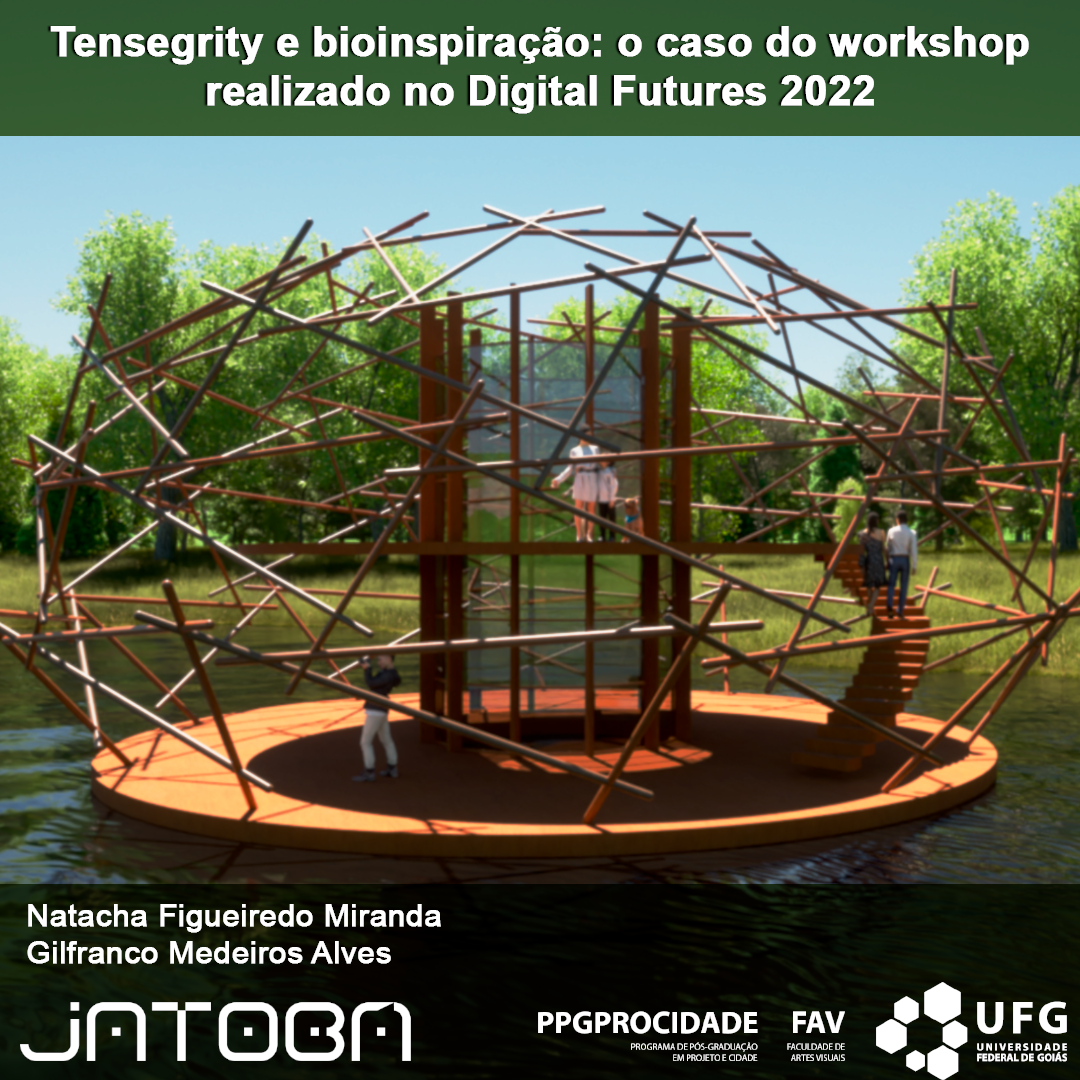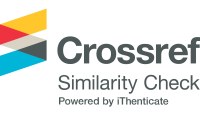Tensegrity and bioinspiration:
the case of the workshop held at Digital Futures 2022
DOI:
https://doi.org/10.5216/revjat.v6.78334Keywords:
Tensegrity, biomimicry, parametric design, prototype, prototypingAbstract
The following study aims to report and analyze the design process and the results developed in the “Tensegrity: Parameterization and Prototyping” workshop, held at the Digital Futures 2022 event. The theoretic foundation is based on a Master’s research carried out at the (omitted for review) University with the (omitted for review) research group. During the meetings, classes were developed based on prototyping methods, parametric modeling and bioinspiration, with the goal of bringing digital processes closer to project development, feeding back the models experienced in practice, analyzing assembly difficulties and discussing the advantages of Tensegrity concerning reducing impacts on nature. Two project challenges were launched, which raised the discussion of technology and its use, resulting in possible solutions to be applied either on the Pantanal of Mato Grosso do Sul or on Mars. The paper presents the results from the workshop and discusses its methods, strategies and the concepts of the developed projects.
Downloads
References
ALVES, G. M. Cibersemiótica e processos de projeto: metodologia em revisão. 2014. Tese (Doutorado em Arquitetura e Urbanismo) - Instituto de Arquitetura e Urbanismo, Universidade de São Paulo (USP), São Carlos, 2014.
DUNN, N. Digital Fabrication in Architecture. London: Laurence King Publishing, 2012.
HENSEL, M.; MENGES, A.; WEINSTOCK, M. Emergent technologies and design. New York: Routledge, 2010.
HSUAN-AN, T. Sementes do cerrado e design contemporâneo. Goiânia: Editora UCG, 2002.
IWAMOTO, L. Digital fabrications: architectural and material techniques. New York: Princeton Architectural Press, 2009.
LITTMAN, J. A. Regenerative Architecture: a pathway beyond sustainability. 2009. 68p. Dissertação (Mestrado em Arquitetura e História da Arte) - Universidade de Massachusetts, Amherst, 2009.
PAWLYN, M. Biomimicry in Architecture. London: RIBA Publishing, 2011.
PIRES, J. F.; PEREIRA, A. T. C. Modelagem Paramétrica da Geometria Complexa de Estruturas Regenerativas na Arquitetura. In: CONGRESO DE LA SOCIEDAD IBERO-AMERICANA DE GRÁFICA DIGITAL, 21., 2017, Concepción. Anais [...]. Concepción: SIGraDi, 2017.
SNELSON, K. Tensegrity, weaving and the binary world: Newton’s third law and the duality of forces. [s.l.]: 2012. E-book.
VERSCHLEISSER, R. Aplicação de Estruturas de Bambu no Design de objetos: como construir objetos leves, resistentes, ecológicos e de baixo custo. 2008. Tese (Doutorado em Artes e Design) - Pontifícia Universidade Católica do Rio de Janeiro (PUC), Rio de Janeiro, 2008.
VICTOR, G.; SEIXAS, M.; RIPPER, J. L. M. Estruturas autoportantes biotensegrity aplicando materiais Naturais. In: ARRUDA, A. J. V. (Org.). Métodos e processos em Biônica e Biomimética: a revolução tecnológica pela natureza. São Paulo: Blucher, 2018. p. 152-71.
ZHANG, J. Y.; OHSAKI, M. Tensegrity structures: Form, Stability, and Symmetry. Tokyo: Springer Japan, 2015.

Downloads
Published
How to Cite
Issue
Section
License
Copyright (c) 2024 Jatobá Journal

This work is licensed under a Creative Commons Attribution 4.0 International License.
- Autores mantém os direitos autorais e concedem à revista o direito de primeira publicação, com o trabalho simultaneamente licenciado sob a Licença Creative Commons Attribution 4.0 que permite o compartilhamento do trabalho com reconhecimento da autoria e publicação inicial nesta revista.
- Autores têm autorização para assumir contratos adicionais separadamente, para distribuição não-exclusiva da versão do trabalho publicada nesta revista (ex.: publicar em repositório institucional ou como capítulo de livro), com reconhecimento de autoria e publicação inicial nesta revista.
- Autores têm permissão para publicar e distribuir seu trabalho online (ex.: em repositórios institucionais ou na sua página pessoal) após a publicação inicial nesta revista, já que isso pode gerar alterações produtivas, bem como aumentar o impacto e a citação do trabalho publicado (Veja O Efeito do Acesso Livre).
- Foram feitos todos os esforços para identificar e creditar os detentores de direitos sobre as imagens publicadas. Se tem direitos sobre alguma destas imagens e não foi corretamente identificado, por favor, entre em contato com a revista Jatobá e publicaremos a correção num dos próximos números.














